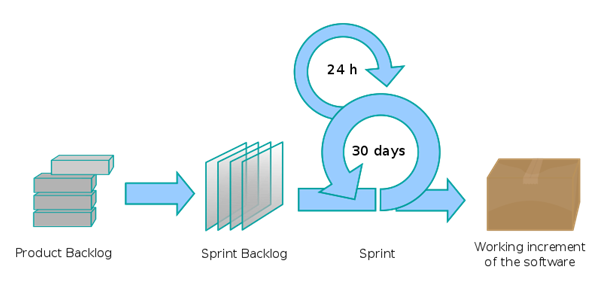A design sprint is a design process that uses only five days to answer a presented issue or challenge. The idea is to fast-forward time and obtain real solutions and feedback in just five days. It goes from generating the idea to its whole live testing in the market. It is not just about doing things fast, and it is about doing things correctly.
For example, if a design sprint is to be completed in a week it would be something like this: on Monday you study the problem and select the area to focus on. Tuesday would be the day to draw some solutions and approaches to the issue. Wednesday is there to make decisions and to get a hypothesis from your solutions. On Thursday it is time to make a prototype of the solution you selected and finally, Friday is the day to give it a try and receive some feedback.
Advantages of running a sprint
Being a fast approach to complex problems, running a sprint has many advantages for today’s businesses. When done right it can create an opportunity for understanding, growth and group development. Once that you have a Design Sprint explained you could see some of the main advantages of using this method:
1) You can find solutions for complex issues
Running a sprint in your business needs the collaboration of many members of the team. Recollecting enough information to understand the issue (which is day one) needs some extra hands involved. People contribute and share ideas to transform issues into solutions. This kind of work where many colleagues participate helps solve difficult and complex problems in a shorter time.
2) Reduces bureaucracy
Setting a 5-day cycle for a project gives paperwork a limited amount of time to work. This translate into more effective communication, forms, and errands. When projects are too long usually the steps to get there are stretched out. Until all the time available is used. If the time is set to five days, the same will happen. Time is going to be used effectively, and much less paperwork will be needed.
3) Saves money
If prototypes are ready in 5 days, you can easily test them and see if they work. This way the company will not invest in long-term projects of ideas that haven’t been through the sprint first. The faster you can validate an idea with investors and customers, the more money you save. This method will also give you some extra time that can be used for improvements or changes. This is possible because you have reduced months of work into one week.
4) Great for team building
When the team has a clear goal in mind, it is easier to collaborate and work together. If every member is focused, it is interesting to see how each of them contributes and gives voice to different angles.
5) A short deadline may enhance creativity
Some people need to feel some pressure to let their minds flow really. Having a self-imposed short deadline is an excellent way to boost productivity and creativity. Ideas are coming fresh and are going to be used at that moment. There is no need or time to postpone ideas until they are more “matured.” The time is now.
Running a sprint may not be the solution to all kind of problems and issues. But, it gives companies the opportunity to test their ideas in one week with a minimal loss or cost. Some projects can take a few “sprints” to be completed. Each of these will have to focus on one area of the issue and have a testable solution in a week. Then, an additional week is going to be necessary to resolve other areas of the issue.
The other side of the coin is that prototyping is not something feasible for many products or situations. If it is necessary to have a more significant investment to create a prototype or if it is necessary to wait for many others to collaborate, it is tougher to have a sprint. It is, however, a very convenient method that can be tested with minimum risks.





